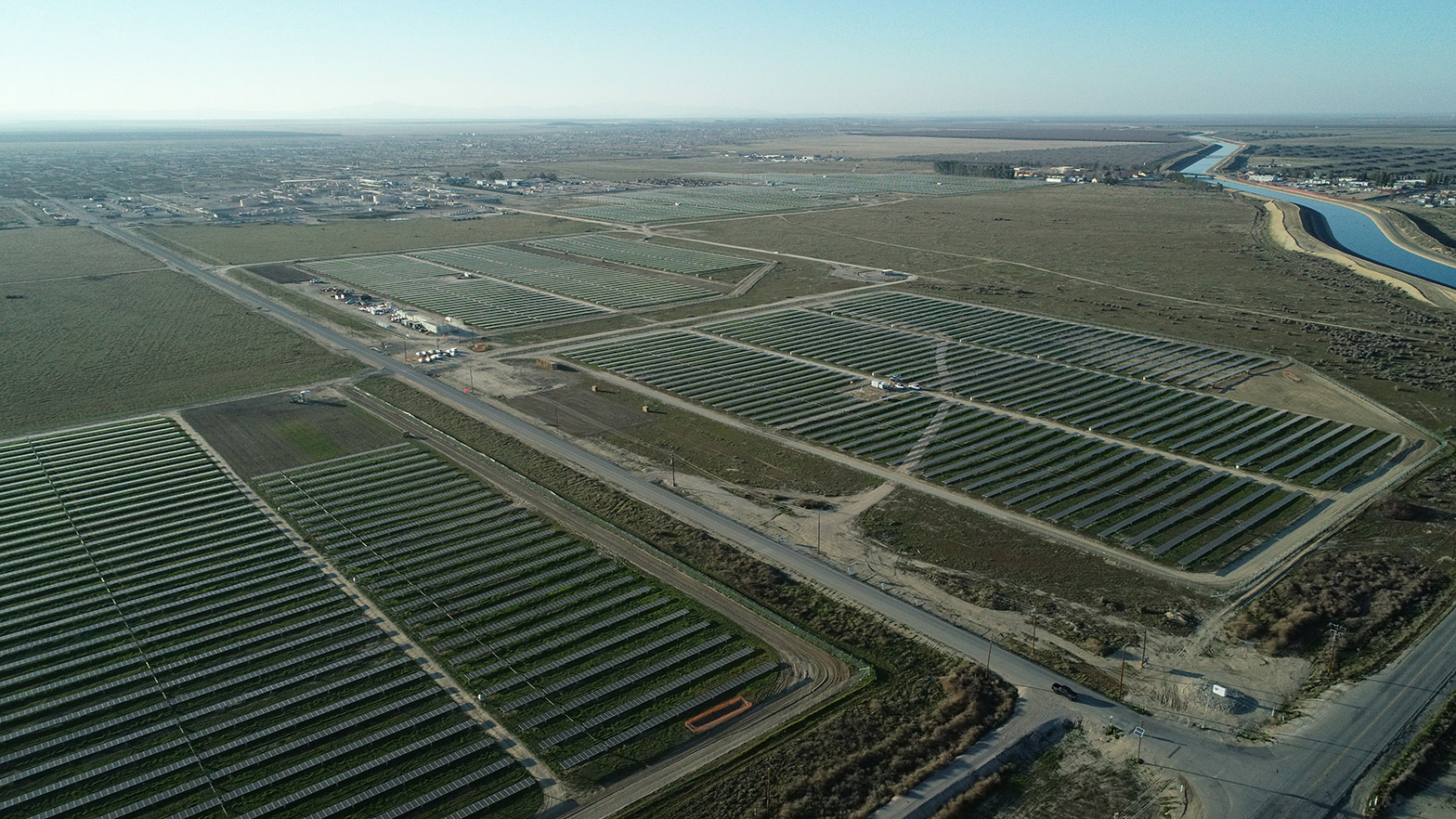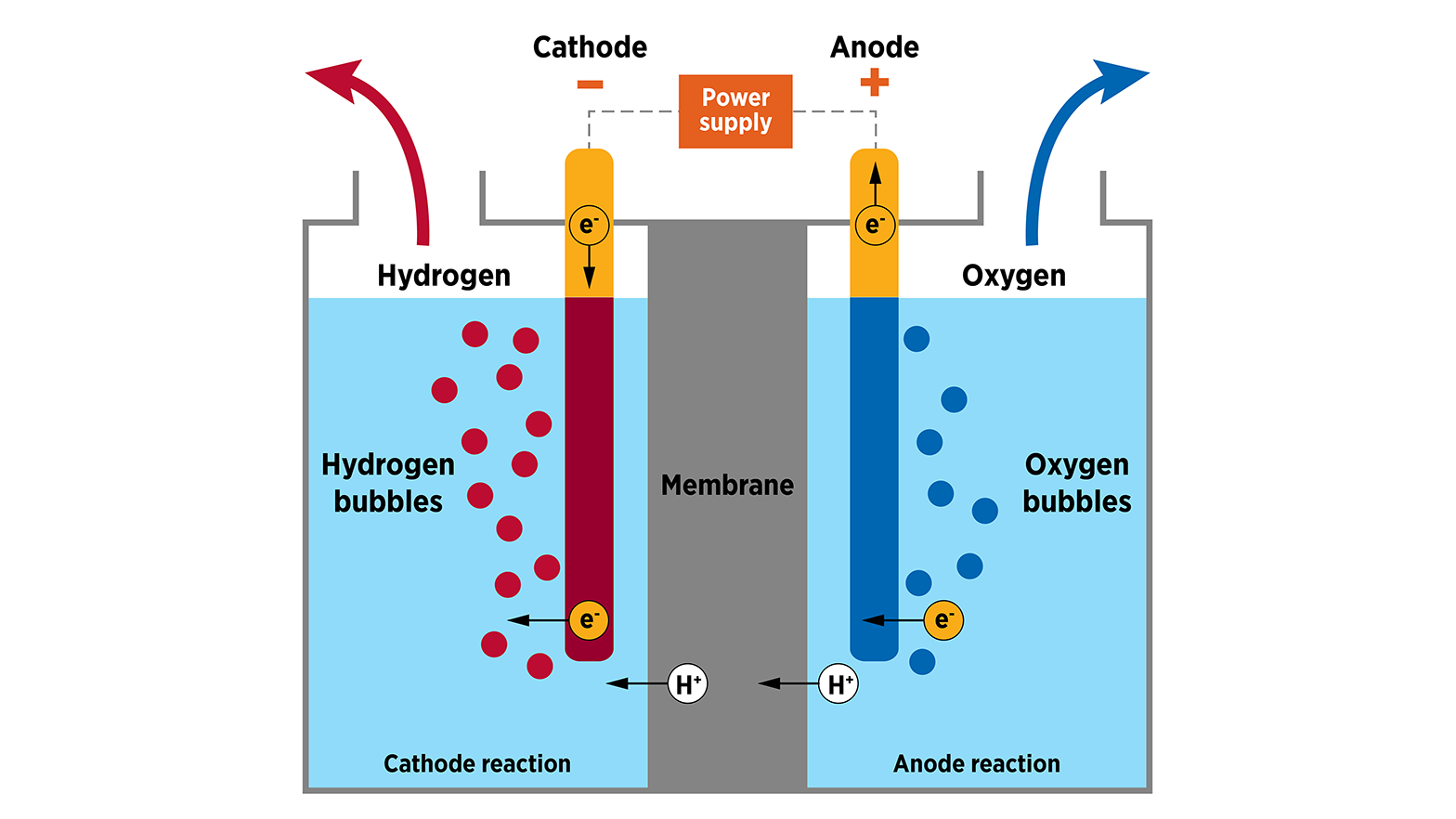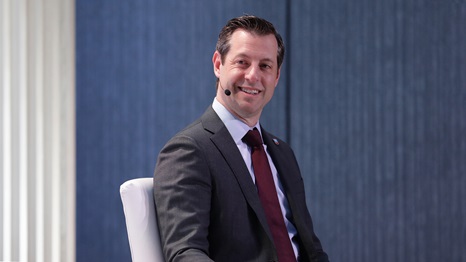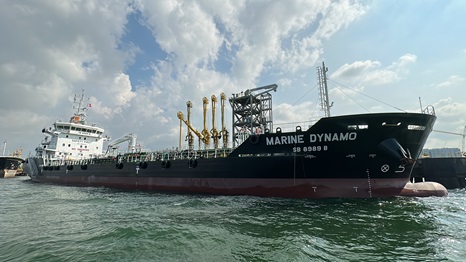our operations
hydrogen facility to be a chevron first
1 min read | february 29, 2024
The team at Chevron's Lost Hills facility in California check on the solar panels that provide electricity to the oil field and soon, the hydrogen production plant.
One of Chevron’s long-standing facilities in California’s San Joaquin Valley is taking on an additional role. For more than a century, the company’s Lost Hills field has been producing oil and gas. Now, taking advantage of its 29-megawatt solar field, Lost Hills will start producing hydrogen too.
“The solar facility, the infrastructure and the availability of water are helping us move into the hydrogen market,” said Ben Leonard, hydrogen commercial manager at Chevron New Energies (CNE).

The 220-acre solar field at Lost Hills will produce lower carbon hydrogen and power the existing oil and gas facility.
how it works
Scott McLemore, facilities engineer for Chevron, said that Lost Hills will need to be fitted with the proper equipment to produce hydrogen. The production plant will use a process called electrolysis.
In this process, water is split into hydrogen and oxygen using the electricity generated from the solar plant. The hydrogen is then compressed and transported to facilities that use hydrogen as a fuel.
ben leonard
hydrogen commercial manager
Chevron New Energies

The process of electrolysis splits water into hydrogen and oxygen. Electricity from the Lost Hills, California, solar field will now be used to produce hydrogen in addition to oil and gas.
what’s next
Hydrogen production is slated to begin in early 2026. The plant is expected to be capable of producing 2.2 tonnes per day.
One of the facility’s key features will be its use of “produced water” which is water produced as a byproduct of other operations. It’s non-potable, meaning it’s not drinking water, but it can be used to produce hydrogen.
“The project is being designed so it will receive non-potable produced water from existing Chevron operations and treat it on site,” McLemore said.
a first step
Lost Hills represents the first Chevron-only commercial electrolytic hydrogen project.
“This is a sign that we are excited to add to the hydrogen supply, specifically in the Central Valley where there is a lot of potential local use,” Leonard said. “This is a business we want to be in, and we can be successful in.”
Details of this story have been updated as of March 6, 2024.
topics covered
related content
-
 laying the foundation to realize carbon capture’s potential
laying the foundation to realize carbon capture’s potentialemissions solutionsmarch 27, 2024
-
 3 things to know about the future of hydrogen
3 things to know about the future of hydrogenemissions solutionsmarch 29, 2024
-
 1st hybrid fueling barge chartered in Singapore
1st hybrid fueling barge chartered in Singaporealternative fuelsmarch 28, 2024
-
 global gas markets are changing: what it means
global gas markets are changing: what it meansemissions solutionsmarch 25, 2024
chevron email updates
Subscribe to our newsletter to receive news and updates.



